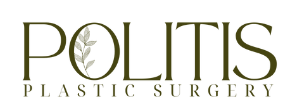Key Takeaways:
- Facelifts can offer long-lasting results, but also come with risks such as infection, hematoma, nerve damage, and scarring.
- Factors such as age, smoking, pre-existing medical conditions, medications, and skin type can increase the likelihood of risks.
- To minimize risks and maximize the chances of a successful facelift, choose an experienced and certified plastic surgeon, follow pre- and post-surgery instructions, and be candid about your medical history.
 As you peer into the mirror, searching for the face of your youth, the idea of a facelift might flutter into your thoughts. A facelift – medically known as rhytidectomy – is a cosmetic surgical procedure aimed at rejuvenating the facial appearance by reducing sagging skin and wrinkles. However, before you commit to going under the knife, it’s essential to understand the risks involved. This article aims to provide a comprehensive guide through the benefits and risks of undergoing a facelift, and how to minimize those risks
As you peer into the mirror, searching for the face of your youth, the idea of a facelift might flutter into your thoughts. A facelift – medically known as rhytidectomy – is a cosmetic surgical procedure aimed at rejuvenating the facial appearance by reducing sagging skin and wrinkles. However, before you commit to going under the knife, it’s essential to understand the risks involved. This article aims to provide a comprehensive guide through the benefits and risks of undergoing a facelift, and how to minimize those risks
Benefits of Facelift
Many have sung the praises of facelifts, marveling at the procedure’s ability to restore a youthful appearance to the face. A successful facelift can result in tightened skin, smoothed wrinkles, and an overall more refreshed look. This improved appearance can significantly boost self-confidence – after all, when you look good, you feel good. Furthermore, facelifts offer long-lasting results, with effects persisting for up to ten years
Risks of Facelift
But, as with any surgical procedure, a facelift comes with risks. Potential complications include infection, which can arise from bacteria entering the incisions. Hematoma, or blood pooling beneath the skin, is another risk that may require further surgery to alleviate the pressure. Nerve damage is also a possibility, which can lead to varying degrees of facial paralysis. Scarring is an inevitable consequence of surgery, but excessive or raised scars may not be the aesthetically desired result. Anesthesia complications, such as an allergic reaction, are rare but not unheard of. Lastly, there’s always the risk of unsatisfactory results, where the individual’s vision of post-op perfection doesn’t quite align with reality
Factors that Increase Risk
Several factors can increase the likelihood of experiencing these risks. Age, for example, can significantly impact the skin’s elasticity and healing capabilities. Smoking is another risk amplifier, as it impairs blood circulation and hinders the healing process. Pre-existing medical conditions, such as diabetes or high blood pressure, can also affect the surgery and recovery. Medications, particularly blood thinners, can exacerbate the risk of complications. Your skin type, too, plays a role in your propensity for scarring. And, of course, the experience of your chosen plastic surgeon can make or break your facelift experience.
Prevention of Risks
To minimize these risks and maximize the chances of a successful facelift, take the following preventative steps. First, choose an experienced and certified plastic surgeon, such as Tampa, FL’s esteemed Dr. Effie Politis. Research the surgeon’s track record, certification, and reviews. Be candid about your medical history and disclose any conditions or medications that could impact the surgery. Prior to the procedure, follow your surgeon’s instructions for preparation, which may include adjusting medications or quitting smoking. Finally, adhere to post-surgery instructions regarding care and follow-up appointments
Conclusion
In conclusion, understanding the risks and benefits of facelifts is crucial for making an informed decision about whether the procedure is right for you. Taking preventative measures can help minimize these risks and improve the likelihood of a successful outcome.
Politis Plastic Surgery in Tampa, FL, led by the skilled Dr. Effie Politis, provides top-notch facelift services with attention to patient safety and satisfaction. Trust the expertise of Dr. Effie Politis, knowing that you are in the hands of a seasoned plastic surgeon committed to delivering the highest quality care. Schedule a consultation today to discuss your facelift goals and address any concerns you may have about the procedure. Rest assured that you’ll walk away with the knowledge and confidence to make the best possible decision for your face and overall wellbeing.
References:
- “10 Benefits of Getting a Facelift and Why You May Want One.” https://espritcosmetic.com/blog/10-benefits-of-a-facelift-and-why-you-may-want-to-get-one-yourself/.
- “Facelift Risks and Safety – American Society of Plastic Surgeons.” https://www.plasticsurgery.org/cosmetic-procedures/facelift/safety.
- “Plastic Surgery Can Also Be Preventative – 5 Treatments to Do Now ….” https://www.palmbeachplastics.com/plastic-surgery/plastic-surgery-can-also-be-preventative-5-treatments-to-do-now-instead-of-later/.





 As you gaze at your reflection in the mirror and wonder about the right enhancements to create the perfect pout that would make even the most stoic Greek gods blush, lip fillers may be your ideal solution. This trendy procedure has become a popular choice among beauty-seekers who wish to attain fuller, plumper lips that look naturally stunning. So, allow me to guide you through what to expect during a lip filler procedure, as well as introduce you to a renowned
As you gaze at your reflection in the mirror and wonder about the right enhancements to create the perfect pout that would make even the most stoic Greek gods blush, lip fillers may be your ideal solution. This trendy procedure has become a popular choice among beauty-seekers who wish to attain fuller, plumper lips that look naturally stunning. So, allow me to guide you through what to expect during a lip filler procedure, as well as introduce you to a renowned 


 The decision to undergo a breast augmentation surgery is one that should be well researched and thoroughly discussed with a board-certified plastic surgeon.
The decision to undergo a breast augmentation surgery is one that should be well researched and thoroughly discussed with a board-certified plastic surgeon. 


 ERAS stands for Enhanced Recovery After Surgery.
ERAS stands for Enhanced Recovery After Surgery. 